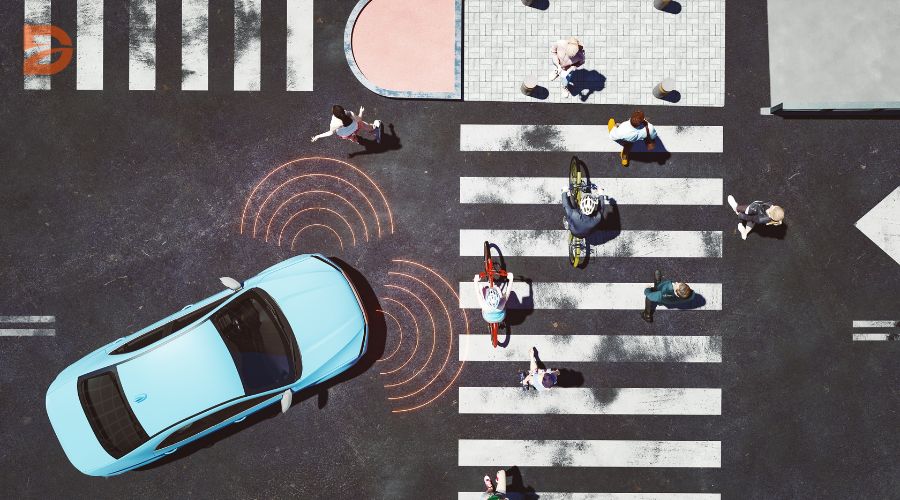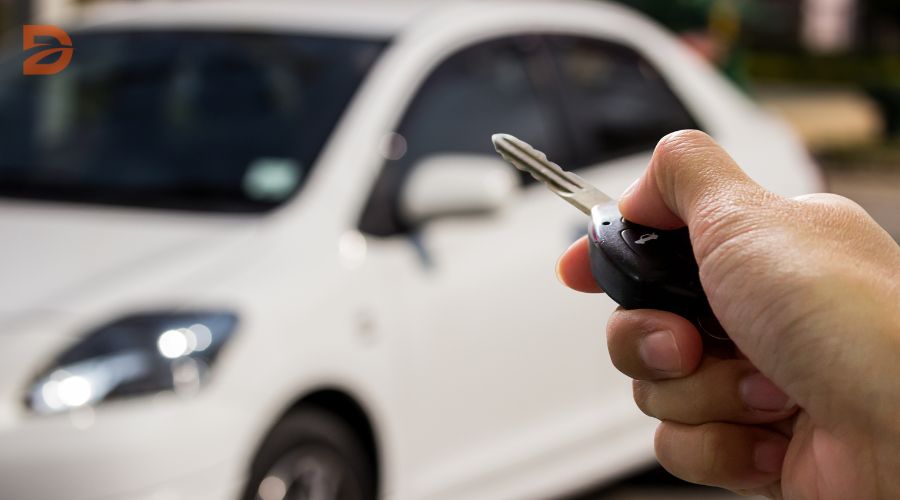Imagine a world where your daily commute becomes a seamless, stress-free experience. That’s the reality that artificial intelligence (AI) is rapidly ushering in, transforming the transportation landscape, and making roads safer and more efficient than ever before. With 86% of public transportation providers actively developing and adopting AI technology projects, the future of urban mobility is set for a major overhaul.
AI-powered systems are now capable of monitoring traffic in real-time, detecting accidents and unexpected events, and initiating dynamic rerouting protocols to minimize disruptions. Personalized navigation guided by AI can provide drivers with tailored guidance based on factors like traffic conditions and historical data, helping to reduce travel time and congestion.
The integration of AI in transportation is revolutionizing the way we experience our daily commutes, from predicting road maintenance needs to enhancing interconnectivity between vehicles and surrounding systems. As we embrace this AI-driven future, the benefits are clear: reduced congestion, improved travel times, and lower pollution levels – all contributing to a more sustainable and efficient transportation ecosystem.
Key Takeaways
- AI is transforming the transportation landscape, making roads safer and more efficient.
- AI-powered systems can monitor traffic, detect accidents, and initiate dynamic rerouting to improve commute times.
- Personalized navigation using AI can provide drivers with tailored guidance based on traffic conditions and historical data.
- AI integration in transportation is leading to reduced congestion, improved travel times, and lower pollution levels.
- The adoption of AI technology by public transportation providers is accelerating the transformation of urban mobility.
AI’s Role in Revolutionizing Traffic Management
As transportation systems become increasingly complex, AI technologies are playing a pivotal role in revolutionizing traffic management. By providing traffic planners with advanced tools for real-time monitoring and analysis, AI is enabling smarter, more efficient, and responsive transportation networks.
Real-time Traffic Monitoring and Analysis
AI-powered real-time traffic monitoring and analysis can help predict traffic flow, detect incidents, and enable adaptive traffic signal control. According to the Department of Transportation’s AI for Intelligent Transportation Systems Program, AI has over 40 potential applications in traffic signal optimization and extensive traffic modeling in the U.S. This technology can help reduce congestion and improve overall traffic efficiency.
Intelligent Transport Systems (ITS)
Intelligent Transport Systems (ITS) leverage technologies like vehicle-to-everything communication (V2X) and connected/autonomous vehicles to improve road safety and traffic conditions. ITS integrates data from traffic cameras, connected vehicles, and weather sensors to predict congestion, issue real-time advisories, and optimize public transportation. These systems demonstrate the transformative potential of AI in transportation management.
As the global market for AI in transportation is expected to grow at a CAGR of 12.4% to reach an estimated USD 23.11 billion by 2032, the integration of AI-powered technologies into traffic management is poised to become increasingly prevalent, leading to a more efficient and reliable transportation system for drivers and commuters alike.
Predictive Models and Digital Twins
In the realm of traffic management, advanced technologies like traffic prediction models and digital twins are revolutionizing the way we approach transportation challenges. These innovative solutions leverage the power of machine learning and data analysis to optimize traffic flow and enhance urban planning.
Traffic Prediction Models
Traffic prediction models utilize AI and machine learning techniques to forecast future traffic conditions based on historical and real-time data. By analyzing patterns, trends, and external factors, these models can accurately anticipate and prepare for congestion, enabling traffic planners to make informed decisions and alleviate bottlenecks before they occur.
Digital Twins for Traffic Simulations
Digital twins, which are virtual replicas of physical transportation infrastructure, offer a powerful tool for traffic simulation and optimization. These digital counterparts allow planners to experiment with different traffic scenarios and evaluate their impact before implementing changes in the real world. This approach saves time, and resources, and minimizes disruptions, leading to more efficient and effective traffic management strategies.
| Benefits of Digital Twins in Traffic Management | Examples |
|---|---|
|
|
By harnessing the power of traffic prediction models and digital twins, cities can anticipate and address transportation challenges more effectively, leading to smoother commutes, reduced congestion, and a more sustainable urban environment.
Optimizing Traffic Signals with AI
As the world becomes more connected, the challenge of managing traffic congestion has become increasingly critical. However, the rise of artificial intelligence (AI) has opened new avenues for optimizing traffic signal systems, leading to improved commute times, reduced fuel consumption, and enhanced overall road safety.
One of the primary ways AI is revolutionizing traffic management is through traffic signal optimization. AI-powered systems can analyze real-time data from traffic sensors, video cameras, and connected vehicles to continuously adjust signal timings and coordination, a concept known as coordinated progressive signaling. This enables a network of intersection signals to be synchronized, maintaining a constant flow of traffic and minimizing delays.
Moreover, adaptive traffic signals equipped with AI can identify peak demand conditions and dynamically adjust their timing to match the current traffic patterns. This adaptive approach helps optimize traffic flow and reduce congestion, ultimately leading to shorter commute times and lower fuel consumption for drivers.
- AI-powered traffic signal optimization can reduce travel times by up to 25%.
- Coordinated progressive signaling can decrease fuel consumption by 10-20%.
- Adaptive traffic signals can improve intersection throughput by 20-30%.
By leveraging the power of AI, cities, and municipalities can create more efficient and responsive traffic management systems, ultimately improving the daily commute for their citizens. As the technology continues to evolve, we can expect even greater advancements in traffic signal optimization and ongoing efforts to make our roads smarter and more sustainable.
AI traffic systems, commute improvements
In the ever-evolving landscape of transportation, AI-powered navigation apps are revolutionizing the way we commute. These intelligent systems leverage real-time traffic data to dynamically reroute vehicles, optimizing travel times and reducing congestion. By integrating with connected systems like ride-sharing, parking, and electric vehicle charging, these navigation apps are enhancing the overall transportation experience.
Route Optimization and Navigation
AI-powered navigation apps are capable of analyzing vast amounts of data to identify the most efficient routes. These systems can adapt to changing traffic patterns, road conditions, and unexpected events, providing drivers with the quickest path to their destinations. Through advanced route optimization algorithms, AI navigation apps can minimize travel time, fuel consumption, and environmental impact.
AI-based Navigation Applications
- AI-powered signaling systems in cities like Pittsburgh have shown the potential to reduce overall travel time by 25% and idling time by over 40%.
- Predictive analytics using AI can identify potential accident hotspots and peak accident times, allowing for preemptive safety measures.
- AI technology in logistics reduces the chances of accidents in the trucking industry by guiding trucks through safer routes.
- AI-powered systems for smarter parking can identify congested areas in advance, enhancing event experiences and facilitating adaptable parking options.
As the integration of AI in traffic systems continues to evolve, the benefits of improved commute times, reduced congestion, and enhanced safety are becoming increasingly evident. By harnessing the power of route optimization, AI navigation apps, and connected systems integration, the future of transportation is poised to become more efficient and user-friendly than ever before.
Benefits: Reduced Congestion and Improved Safety
The integration of AI across various transportation applications fosters safer and more efficient traffic networks. AI-powered traffic management systems can optimize traffic flow through continuous analysis of real-time data, adjust traffic signal timings based on demand, and quickly detect incidents to enable swift response. This leads to reduced traffic congestion, lower fuel consumption, and improved road safety by identifying hazardous driving behaviors and preventing accidents.
Adaptive traffic signals, for instance, can decrease travel times by up to 20%, resulting in smoother and faster commutes. Moreover, AI-driven traffic management systems significantly reduce congestion by optimizing traffic flow and minimizing bottlenecks, leading to substantial economic benefits by decreasing the costs associated with lost productivity, fuel consumption, and vehicle maintenance.
The environmental benefits of AI-powered traffic management are also significant, as it helps mitigate the negative impacts of traffic on air quality and greenhouse gas emissions. By reducing congestion, AI systems contribute to improved air quality and a more sustainable transportation ecosystem.
Beyond optimizing traffic flow, AI can provide personalized route recommendations and alternative transportation options, further enhancing the commuter experience. As the integration of connected and autonomous vehicles into AI-powered traffic management systems increases, the potential for reduced congestion and improved safety will only continue to grow.
Conclusion
The application of AI in traffic management represents a transformative shift towards more intelligent, efficient, and sustainable transportation systems. By leveraging real-time data analysis, predictive modeling, and advanced optimization algorithms, AI is enabling traffic planners to address long-standing challenges such as congestion, safety, and environmental impacts. As cities continue to embrace smart city mobility solutions, the integration of AI into traffic management will be crucial to creating the transportation networks of the future, benefiting both commuters and the broader urban community.
The integration of AI transportation solutions has revolutionized the way we approach traffic management, with technologies like AI-based video analytics, Intelligent Transport Systems (ITS), and predictive traffic models driving significant improvements in traffic flow, safety, and sustainability. From adaptive traffic signals that respond to real-time conditions to navigation apps that leverage AI for dynamic rerouting, the impact of AI on the future of traffic management is undeniable.
As cities continue to grapple with the challenges of growing populations and increasing transportation demands, the role of AI in traffic management will only become more critical. By harnessing the power of data, predictive analytics, and advanced optimization algorithms, AI-powered systems can help unlock the full potential of our transportation infrastructure, leading to a more seamless, efficient, and sustainable urban experience for all.
FAQ
How can AI help improve traffic management?
AI technologies offer traffic planners access to tools that can be used to analyze, detect, and predict patterns in traffic. This helps establish a traffic network where everything functions efficiently, including real-time monitoring, adaptive traffic signal control, and intelligent transportation systems.
How do AI-powered traffic prediction models work?
Traffic prediction models use AI and machine learning techniques to forecast future traffic conditions based on historical and real-time data. This allows traffic planners to better anticipate and prepare for congestion. Digital twins, which are virtual replicas of physical transportation infrastructure, can be used to simulate and evaluate the impact of different traffic scenarios before implementing changes in the real world.
What are the benefits of optimizing traffic signals with AI?
The optimization of traffic signal systems is one of the best ways to regulate traffic flow in a way that corresponds to demand requirements, congestion, and pedestrian data. Coordinated progressive signaling and adaptive traffic signals can identify peak demand conditions and adjust their timings accordingly to help optimize traffic flow and reduce congestion.
How do AI-powered navigation apps improve commute times?
AI-powered navigation applications leverage real-time traffic data to dynamically reroute vehicles based on current conditions, improving commute times and reducing congestion. These navigation apps can also integrate with other connected systems like ride-sharing, parking, and electric vehicle charging to further enhance the transportation experience.
What are the overall benefits of integrating AI in traffic management?
The integration of AI across various transportation applications fosters safer and more efficient traffic networks. AI can optimize traffic flow through continuous analysis of real-time data, adjust traffic signal timings based on demand, and detect incidents to enable swift response. This leads to reduced congestion, lower fuel consumption, and improved road safety by identifying hazardous driving behaviors and preventing accidents. The environmental benefits of AI-powered traffic management are also significant, as it helps mitigate the negative impacts of traffic on air quality and greenhouse gas emissions.











